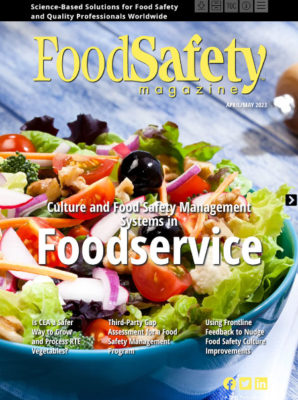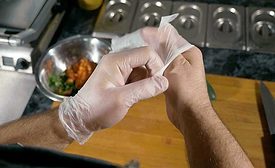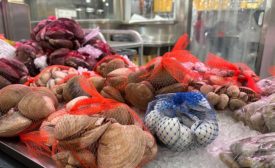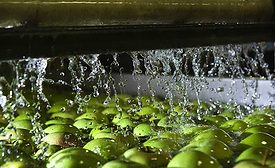Home » Publications » Food Safety Magazine
Our Publications
Please select a publication below.
Food Safety Magazine

April/May 2023
Cover Story
Back to TopIn what ways is your brand either superior to or deficient from the behaviors revealed by your colleagues?
Read More
Features
Back to TopUsing Frontline Feedback to Nudge Food Safety Culture Improvements
The objective for an organization wanting to improve its food safety culture is to find ways to nudge and make incremental improvements
April 10, 2023
Is CEA a Safer Way to Grow and Process RTE Vegetables?
The risk profile of CEA must be compared to that of other RTE produce to explore the question of safety in CEA operations
April 10, 2023
The Importance of Third-Party Gap Assessment for a Food Safety Management Program
An unbiased gap assessment of a foodservice business' FSMP should be performed by a third party, using a defined set of standards for each business function
April 10, 2023
Columns
Back to TopTransferring Needed Experience and Skills to the Next Generation
Generational changes, as part of normal turnover in a company, catalyze the need for knowledge transfer—but how can this best be accomplished?
April 10, 2023
How the Food Traceability Rule will Impact Food Processors—Part 2
Food processors are certainly aware of FDA's Final Food Traceability Rule, but many are not sure how they will be affected by it
April 10, 2023
Designing for Greatness while Considering Total Cost of Ownership
The total cost of ownership, and not only the price tag, is critical to consider when evaluating the hygienic design of equipment
April 10, 2023
Guiding Principles of Shellfish Safety
The harvest, holding, transport, and sale of shellfish are tightly regulated in the U.S. to reduce the risk of foodborne illness to consumers
April 10, 2023
Controlling Foreign Object Hazards in Food
The reliability of control systems should align with foreign object risk, and redundant controls should be implemented for high-risk hazards to increase the overall reliability
April 10, 2023
Recall Regulatory Partners' Efforts to Improve Integration Expands Nationwide
The 2022 Recall Integration Partnership Project expanded upon critical state and federal partnerships to improve response capabilities during recall events
April 7, 2023
Cybersecurity and Food Defense: Establishing an ISAC for the Food and Agriculture Sector
With security threats on the rise, an Information Sharing and Analysis Center (ISAC) is needed for the food and agriculture sector
April 10, 2023
Get our eMagazine delivered directly to your inbox
Stay in the know on the latest science-based solutions for food safety.
SUBSCRIBE TODAY!Copyright ©2024. All Rights Reserved BNP Media.
Design, CMS, Hosting & Web Development :: ePublishing












